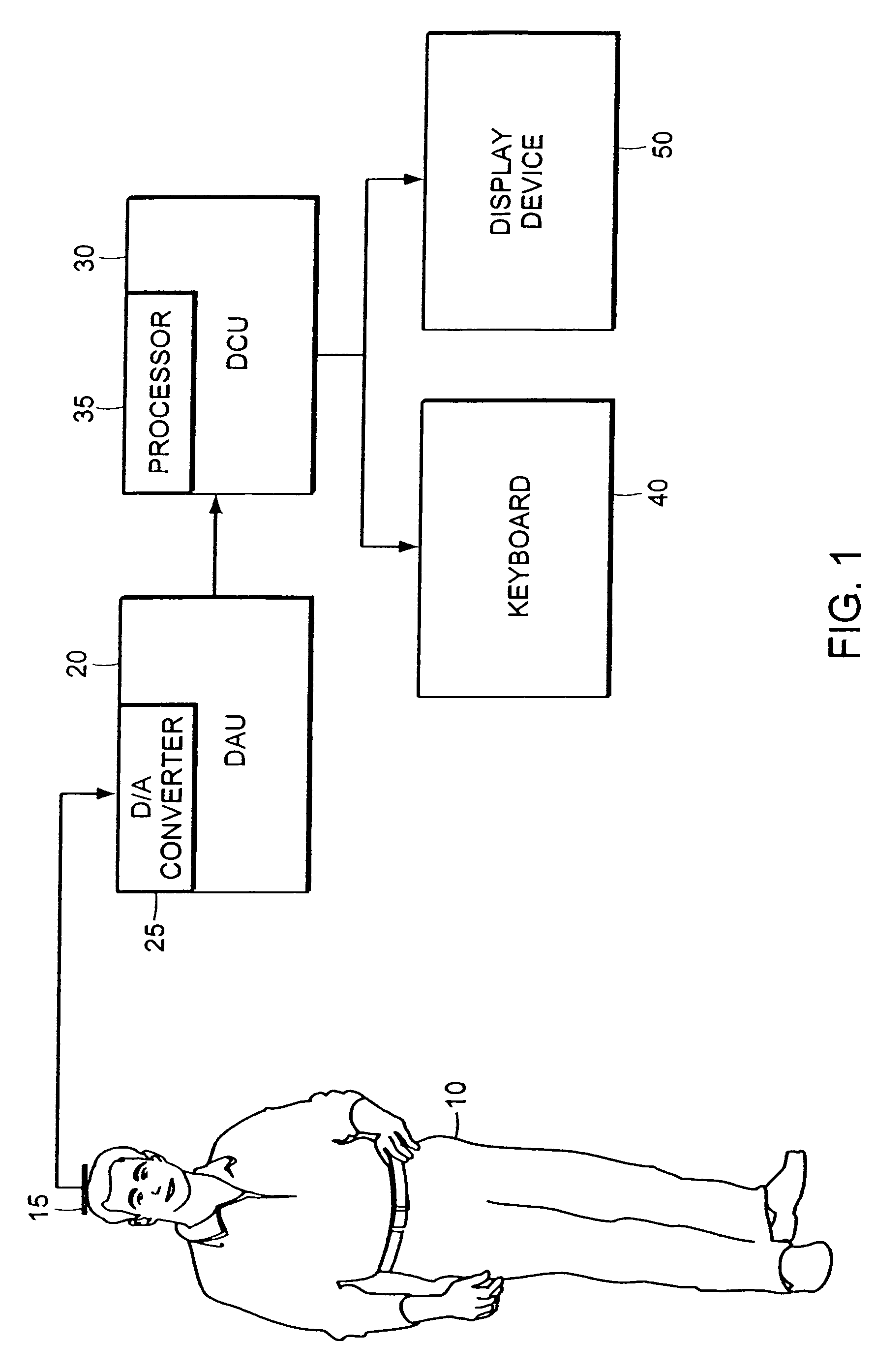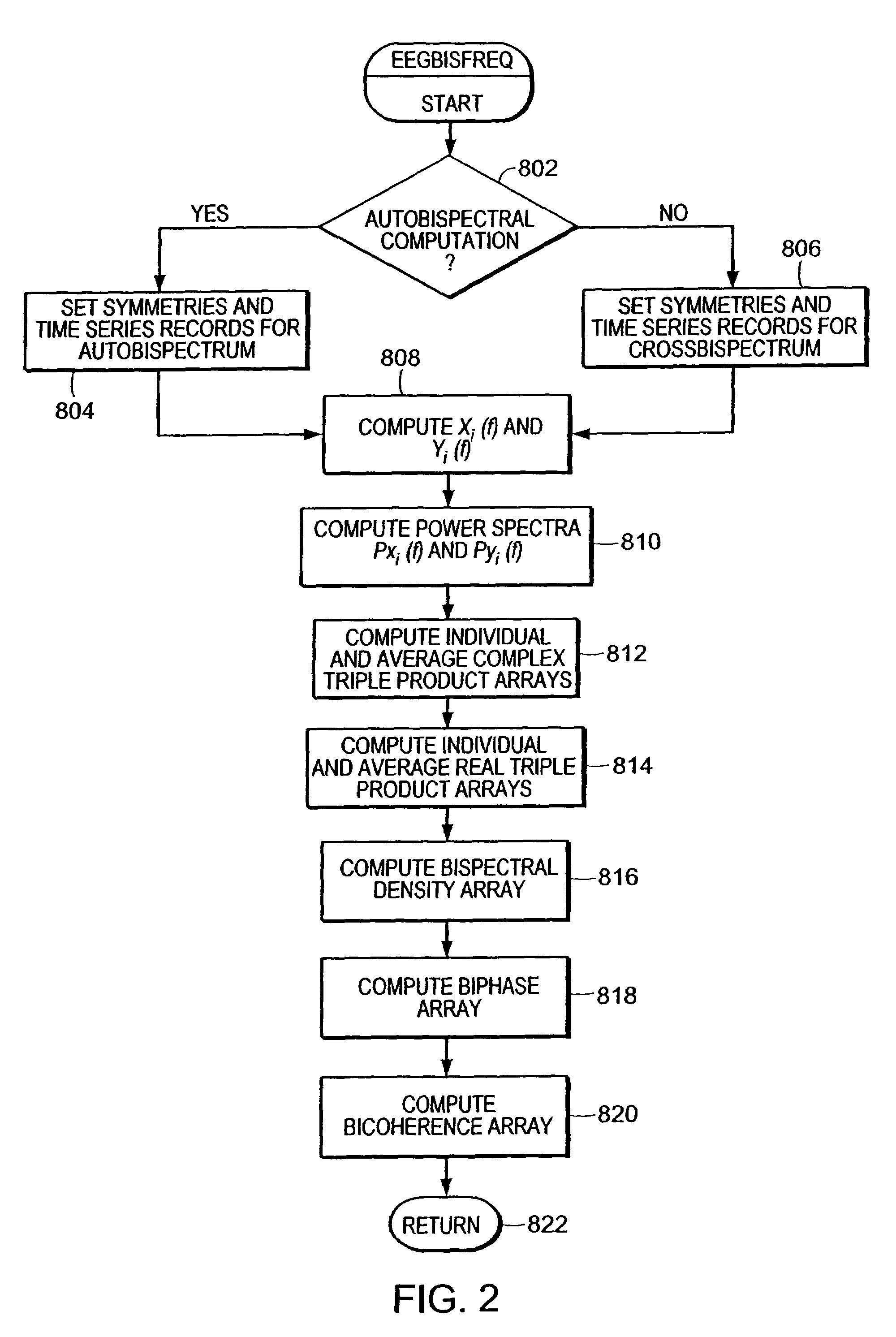System and method of assessment of neurological conditions using EEG
a neurological condition and system technology, applied in the field of neurological conditions assessment, can solve the problems of time-consuming and time-consuming application of nincds-adrda criteria, inability to diagnose “probable atd” and other problems, and achieve the effect of improving the performance characteristics of features
- Summary
- Abstract
- Description
- Claims
- Application Information
AI Technical Summary
Benefits of technology
Problems solved by technology
Method used
Image
Examples
Embodiment Construction
[0017]A preferred embodiment of the present invention shown in FIG. 1 incorporates a Data Acquisition Unit (DAU) 20 that is used to acquire an EEG signal from a subject 10 for subsequent processing. The DAU 20 typically consists of a computer system with an integral analog-to-digital (A-D) converter 25 and a set of electrodes that is representatively shown placed on the scalp of a subject 10. While only a single electrode 15 is shown, any montage of electrodes used to obtain EEG signals may be used in the invention. The A-D converter 25 is used to transform the analog EEG signals obtained from the electrodes 15 into a sampled set of signal values that may then be analyzed by the processor 35 of a Data Computation Unit (DCU) 30. The DCU 30 incorporates a processor 35 and a communications device that receives the sampled values from the DAU 20. In the described embodiment, the processors of the DAU 20 and DCU 30 are one and the same. In an alternate embodiment, however, the DAU 20 may...
PUM
 Login to View More
Login to View More Abstract
Description
Claims
Application Information
 Login to View More
Login to View More - R&D
- Intellectual Property
- Life Sciences
- Materials
- Tech Scout
- Unparalleled Data Quality
- Higher Quality Content
- 60% Fewer Hallucinations
Browse by: Latest US Patents, China's latest patents, Technical Efficacy Thesaurus, Application Domain, Technology Topic, Popular Technical Reports.
© 2025 PatSnap. All rights reserved.Legal|Privacy policy|Modern Slavery Act Transparency Statement|Sitemap|About US| Contact US: help@patsnap.com



